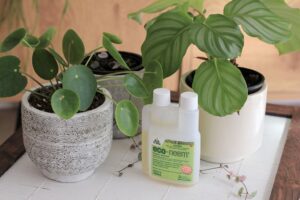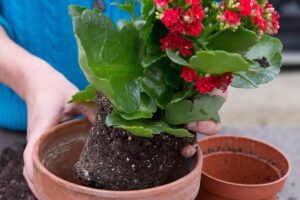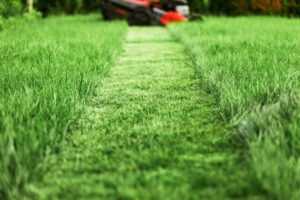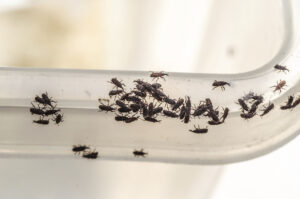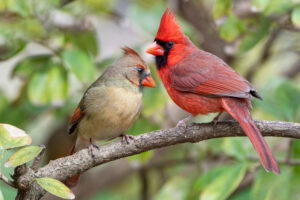
String of Pearls (Senecio rowleyanus) is a captivating succulent plant known for its trailing stems adorned with spherical, bead-like leaves. As a popular choice for indoor gardens and hanging baskets, the String of Pearls adds a touch of whimsy and elegance to any space. However, despite its resilience, this unique plant may sometimes exhibit signs of distress, leaving plant enthusiasts wondering: “Why is my String of Pearls dying?” In this article, we explore the common reasons for String of Pearls decline and provide practical tips for reviving this beloved succulent.
Introduction to String of Pearls Plants
Overview of String of Pearls
The String of Pearls plant is native to South Africa and belongs to the genus Senecio. Its distinctive appearance, featuring cascading stems adorned with spherical, pearl-like leaves, has earned it the nickname “String of Pearls.” This succulent is prized for its low-maintenance nature and striking aesthetic appeal, making it a popular choice for both beginner and experienced plant enthusiasts.
Importance of Plant Care
While String of Pearls plants are relatively easy to care for, they do require specific environmental conditions and attention to thrive. Understanding the factors that contribute to their health and vitality is essential for preventing decline and promoting robust growth.
Common Reasons for String of Pearls Dying
Overwatering
Overwatering is one of the most common causes of String of Pearls decline, leading to root rot and other moisture-related issues.
Signs of Overwatering
Signs of overwatering in String of Pearls plants include yellowing or translucent leaves, mushy stems, and a foul odor emanating from the soil. These symptoms indicate that the plant’s roots are suffocating due to excessive moisture, leading to decreased nutrient uptake and eventual decline.
Consequences for the Plant
If left unchecked, overwatering can quickly lead to irreversible damage and death of the String of Pearls plant. The accumulation of excess moisture in the soil creates an anaerobic environment that promotes the growth of harmful pathogens, including fungi and bacteria, which attack the plant’s roots and tissues.
Underwatering
Underwatering is another common issue that can cause String of Pearls plants to wilt and decline.
Signs of Underwatering
Symptoms of underwatering include shriveled or wrinkled leaves, dry and brittle stems, and leaf drop. These signs indicate that the plant is not receiving an adequate supply of water to support its metabolic processes and maintain turgidity.
Impact on Plant Health
Prolonged underwatering can result in stunted growth, wilting, and eventual death of the String of Pearls plant. Without sufficient moisture, the plant is unable to transport nutrients and water to its leaves and stems, leading to cellular dehydration and tissue damage.
Lack of Proper Lighting
Insufficient lighting is another factor that can contribute to the decline of String of Pearls plants, especially when grown indoors.
Effects of Insufficient Light
Inadequate light levels can cause the plant to become etiolated, characterized by elongated stems and sparse leaf growth. Without access to sufficient sunlight, the String of Pearls plant is unable to photosynthesize effectively, resulting in reduced energy production and weakened overall health.
Remedial Measures
To remedy the effects of insufficient lighting, consider relocating the plant to a brighter location with indirect sunlight or supplementing its light exposure with artificial grow lights. Additionally, periodically rotating the plant to ensure even light distribution can help prevent etiolation and promote balanced growth.
Environmental Factors Affecting String of Pearls Health
Temperature Extremes
Extreme temperatures can have detrimental effects on the health and vitality of String of Pearls plants, especially when exposed to prolonged periods of heat or cold.
Effects of High and Low Temperatures
High temperatures can cause the plant’s leaves to become scorched or sunburned, leading to tissue damage and discoloration. Conversely, exposure to low temperatures can result in frost damage and cellular injury, causing the plant’s leaves to become discolored or necrotic.
Ideal Temperature Range
String of Pearls plants thrive in moderate temperatures ranging from 65°F to 75°F (18°C to 24°C). Avoid placing the plant in areas prone to temperature fluctuations or drafts, as this can stress the plant and compromise its overall health.
Humidity Levels
Humidity levels play a crucial role in maintaining the health and vigor of String of Pearls plants, especially in indoor environments with low humidity.
Impact of Humidity on Plant Growth
Insufficient humidity can cause the plant’s leaves to desiccate and shrivel, leading to dehydration and stress. String of Pearls plants prefer moderate to high humidity levels, ideally ranging from 50% to 70%, to support optimal growth and hydration.
Ways to Adjust Humidity
To increase humidity levels around String of Pearls plants, consider placing them on a pebble tray filled with water or using a humidifier to supplement moisture in the air. Grouping plants together can also create a microclimate with higher humidity levels, benefiting all plants in the vicinity.
Air Circulation
Proper air circulation is essential for maintaining the health and vigor of String of Pearls plants, as stagnant air can promote the growth of harmful pathogens and hinder gas exchange.
Importance of Airflow
Good airflow helps prevent the buildup of excess moisture around the plant’s foliage and soil, reducing the risk of fungal infections and other moisture-related issues. Adequate air circulation also helps regulate temperature and humidity levels, creating a conducive environment for plant growth.
Methods to Improve Circulation
To improve air circulation around String of Pearls plants, ensure that they are not overcrowded or placed in areas with restricted airflow. Regularly prune and thin out dense foliage to allow for better air movement and light penetration. Using a small fan to gently circulate air around the plants can also help promote ventilation and prevent stagnation.
Pests and Diseases
String of Pearls plants are susceptible to a variety of pests and diseases that can compromise their health and vitality.
Common Pests
Common pests that may affect String of Pearls plants include spider mites, mealybugs, and aphids. These pests feed on the plant’s sap and tissues, causing damage to leaves and stems and weakening the plant’s overall health.
Identification and Control
To identify and control pest infestations, carefully inspect the plant’s foliage and stems for signs of insect activity, such as webbing, sticky residues, or visible pests. Treat infestations promptly with insecticidal soap or neem oil, applying the product according to the manufacturer’s instructions to ensure effective control without harming the plant.
Fungal Diseases
String of Pearls plants are also susceptible to fungal diseases such as powdery mildew and root rot, especially in humid or poorly ventilated environments.
Symptoms and Treatment
Symptoms of fungal diseases include white powdery growth on leaves, yellowing or browning of foliage, and soft, mushy stems. To treat fungal infections, remove affected plant parts and improve ventilation around the plant to reduce humidity levels. Apply fungicidal treatments as needed to prevent further spread of the disease and promote plant recovery.
Root Rot
Root rot is a common issue that can affect String of Pearls plants when grown in excessively moist or poorly drained soil.
Causes and Prevention
Root rot is caused by fungal pathogens that thrive in waterlogged soil conditions, leading to the decay of the plant’s root system and subsequent decline in health. To prevent root rot, ensure that the plant is grown in well-draining soil and watered sparingly, allowing the soil to dry out between waterings. Avoid overwatering and waterlogged conditions, as these create an ideal environment for fungal growth and root rot development.
Tips for Reviving a Dying String of Pearls
Assessing Plant Health
Before attempting to revive a dying String of Pearls plant, assess its overall health and condition. Examine the leaves, stems, and roots for signs of damage, disease, or pest infestation, noting any abnormalities or changes in appearance.
Adjusting Watering Routine
Adjust the plant’s watering routine to ensure that it receives the appropriate amount of moisture without risking overwatering or underwatering. Allow the soil to dry out partially between waterings, watering the plant thoroughly and evenly when the top inch of soil feels dry to the touch. Avoid waterlogging the soil or leaving the plant sitting in standing water, as this can lead to root rot and other moisture-related issues.
Providing Adequate Lighting
Ensure that the String of Pearls plant receives adequate lighting to support its growth and vitality. Place the plant in a bright location with indirect sunlight, avoiding direct exposure to harsh afternoon sun or intense heat. Supplement natural light with artificial grow lights if necessary, especially during the winter months or in low-light environments.
Treating Pests and Diseases
If the plant shows signs of pest infestation or disease, take immediate action to address the problem and prevent further damage. Treat pest infestations with insecticidal soap or neem oil, applying the product thoroughly to all affected areas of the plant. For fungal diseases, remove affected plant parts and treat the plant with fungicidal treatments to halt the spread of the disease and promote recovery.
Patience and Persistence
Reviving a dying String of Pearls plant requires patience and persistence, as it may take time for the plant to recover and regain its vigor. Monitor the plant closely for signs of improvement, adjusting care practices as needed to support its ongoing health and well-being. With proper care and attention, most String of Pearls plants can be successfully revived and restored to their former beauty.
In conclusion, understanding the common reasons for String of Pearls decline and implementing appropriate care practices are essential for maintaining the health and vitality of this unique succulent. By addressing issues such as overwatering, underwatering, inadequate lighting, environmental factors, pests, and diseases, plant enthusiasts can effectively revive a dying String of Pearls and enjoy its beauty for years to come. With proper care and attention, this captivating succulent will thrive and flourish, adding a touch of elegance and charm to any indoor garden or living space.

